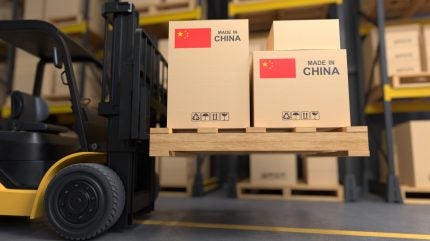Our Terms & Conditions | Our Privacy Policy
US tariffs hit China’s retail and export sectors

As China faces slower growth and weaker consumer confidence, US trade policy is fuelling wider concerns for global trade and recovery. / Credit: Es sarawuth via Shutterstock
China’s economic growth is showing signs of strain as recent changes in US trade policies, including the reimposition of tariffs on Chinese goods, affect both manufacturing and retail sectors.
The adjustments come amid ongoing tensions between the two largest global economies, prompting shifts in supply chains and market strategies.
Impact of US tariffs on Chinese manufacturing and exports
The renewed US tariffs have added pressure on China’s manufacturing industry, increasing costs for exporters and complicating supply chain operations.
These tariffs target a range of products, from electronics to consumer goods, impacting the competitiveness of Chinese exports in the US market.
Manufacturers are adapting by seeking alternative markets and adjusting production methods, though the tariffs have contributed to slower export growth.
Effects on retail markets in the United States and China
US retailers are responding to higher import costs by reevaluating product pricing and sourcing strategies. Some have raised prices on consumer goods, while others have shifted towards non-Chinese suppliers to mitigate tariff impacts.
Meanwhile, Chinese domestic retail faces its own challenges, including slower consumer spending growth and uncertainty stemming from trade tensions.
These factors combine to create a complex retail environment on both sides of the Pacific.
Broader implications for the global economy and trade relations
The tariff changes between the US and China have broader consequences beyond bilateral trade. Global supply chains are increasingly reconfigured as businesses seek stability amid policy unpredictability.
Analysts warn that prolonged trade restrictions may hinder recovery from recent global economic disruptions and slow international trade growth. Ongoing negotiations and policy shifts will be critical in shaping future economic interactions between the two countries.
This evolving situation underscores the continuing economic ripple effects of trade policies, influencing manufacturing, retail sectors, and wider global commerce.
Navigate the shifting tariff landscape with real-time data and market-leading analysis. Request a free demo for GlobalData’s Strategic Intelligence here.
Sign up for our daily news round-up!
Give your business an edge with our leading industry insights.
[ad_1]
Images are for reference only.Images and contents gathered automatic from google or 3rd party sources.All rights on the images and contents are with their legal original owners.
[ad_2]



Comments are closed.